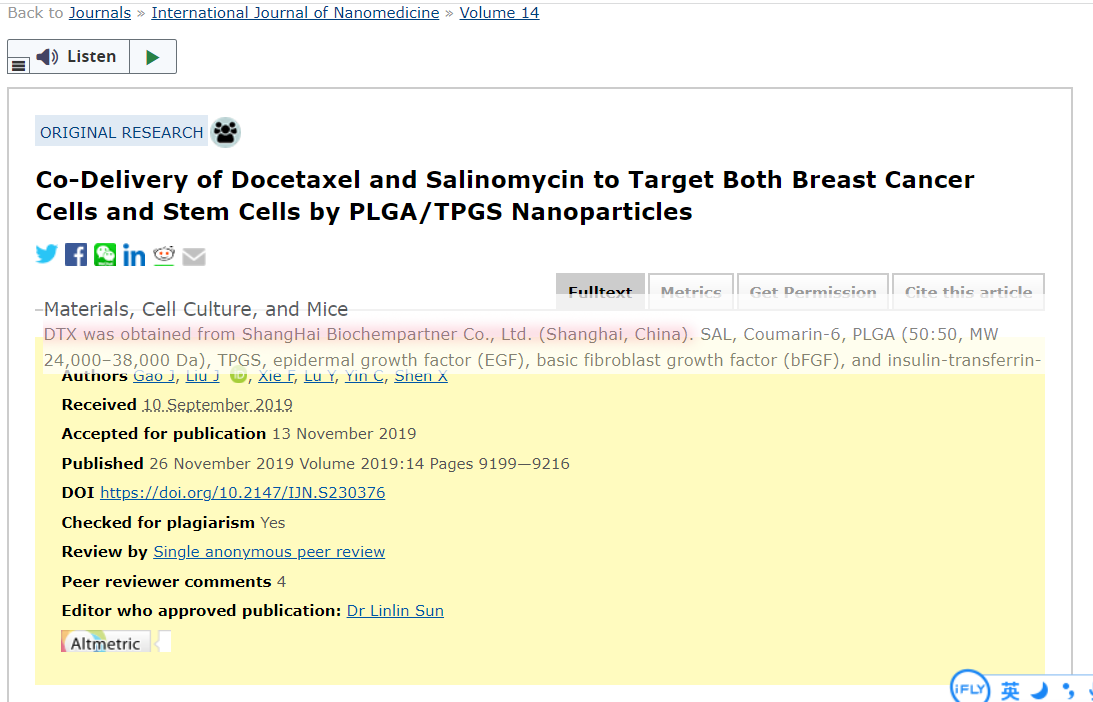Co-Delivery of Docetaxel and Salinomycin to Target Both Breast Cancer Cells and Stem Cells by PLGA/TPGS Nanoparticles

Purpose: Conventional chemotherapy is hampered by the presence of breast cancer stem cells (BCSCs). It is crucial to eradicating both the bulky breast cancer cells and BCSCs, using a combination of conventional chemotherapy and anti-CSCs drugs. However, the synergistic ratio of drug combinations cannot be easily maintained in vivo. In our previous studies, we demonstrated that the simultaneous delivery of two drugs via nanoliposomes could maintain the synergistic drug ratio for 12 h in vivo. However, nanoliposomes have the disadvantage of quick drug release, which makes it difficult to maintain the synergistic drug ratio for a long time. Herein, we developed a co-delivery system for docetaxel (DTX)—a first-line chemotherapy drug for breast cancer—and salinomycin (SAL)—an anti-BCSCs drug—in rigid nanoparticles constituted of polylactide-co-glycolide/D-alpha-tocopherol polyethylene glycol 1000 succinate (PLGA/TPGS). Methods: Nanoparticles loaded with SAL and DTX at the optimized ratio (NSD) were prepared by the nanoprecipitation method. The characterization, cellular uptake, and cytotoxicity of nanoparticles were investigated in vitro, and the pharmacokinetics, tissue distribution, antitumor and anti-CSCs activity of nanoparticles were evaluated in vivo. Results: We demonstrated that a SAL/DTX molar ratio of 1:1 was synergistic in MCF-7 cells and MCF-7-MS. Moreover, the enhanced internalization of nanoparticles was observed in MCF-7 cells and MCF-7-MS. Furthermore, the cytotoxicity of NSD against both MCF-7 cells and MCF-7-MS was stronger than the cytotoxicity of any single treatment in vitro. Significantly, NSD could prolong the circulation time and maintain the synergistic ratio of SAL to DTX in vivo for 24 h, thus exhibiting superior tumor targeting and anti-tumor activity compared to other treatments. Conclusion: Co-encapsulation of SAL and DTX in PLGA/TPGS nanoparticles could maintain the synergistic ratio of drugs in vivo in a better manner; thus, providing a promising strategy for synergistic inhibition of breast cancer. Keywords: combined therapy, breast cancer stem cells, docetaxel, salinomycin, nanoparticles




